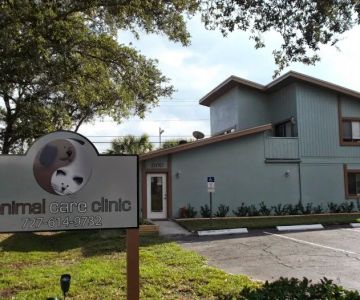Understanding Dog Dental Cleaning and Why It’s Necessary
As a pet owner, you know the importance of maintaining your dog’s health. One area that often gets overlooked, however, is their dental hygiene. Just like humans, dogs can suffer from dental problems such as plaque buildup, gingivitis, and periodontal disease. These issues can cause pain and lead to more serious health problems. Dental cleaning is one of the most important procedures to keep your dog’s teeth healthy. After the cleaning, however, comes the vital part—post-dental care.
1. Immediate Post-Cleaning Care for Your Dog
After your dog undergoes a dental cleaning, it’s important to keep a close eye on their recovery. Most dogs are groggy after anesthesia and may need time to fully wake up. Immediately following the procedure, make sure your dog is in a calm, quiet environment to rest. Avoid any heavy play or activities during this period.
Depending on the type of dental cleaning performed, your veterinarian may recommend restricting your dog’s food and water intake for a few hours. Start with small amounts of water, then progress to soft food after the anesthesia wears off completely. You should also watch for any signs of pain, swelling, or excessive drooling, which could indicate an issue that needs to be addressed by your vet.
2. Managing Pain After Dental Cleaning
Pain management is a crucial part of post-dental care for dogs. Depending on the extent of the cleaning, your veterinarian may prescribe pain relief medications. It’s important to administer these medications exactly as prescribed. Never give your dog over-the-counter painkillers, as these can be harmful to pets.
In addition to medications, providing soft, easy-to-eat food can help avoid discomfort while chewing. Many dogs experience sensitivity to their gums and teeth after a cleaning, so offering food that doesn’t require excessive chewing can make the process easier for them. You can try special veterinary-recommended soft food or cook a meal at home for them using simple ingredients like boiled chicken and rice.
3. Monitor Your Dog’s Oral Hygiene Routine
Once your dog has recovered from their dental cleaning, it’s time to maintain their oral health to avoid future dental issues. Starting an at-home oral hygiene routine is key. Regular brushing with a pet-safe toothbrush and toothpaste is highly recommended by veterinarians. Brushing your dog’s teeth not only prevents plaque buildup but also reduces the risk of gum disease and bad breath.
In addition to brushing, you can also introduce dental chews and toys designed to promote oral health. These can help remove food particles and plaque, ensuring that your dog’s teeth stay clean between professional cleanings.
4. Watch for Signs of Complications
Even though dental cleaning is generally a safe procedure, complications can sometimes arise. It’s important to be aware of any unusual signs that could indicate your dog is struggling to recover. Watch for symptoms such as:
- Excessive drooling or blood in the saliva
- Refusal to eat or drink
- Signs of pain when chewing
- Bad breath returning sooner than expected
- Swelling or redness around the mouth or gums
If you notice any of these symptoms, contact your veterinarian immediately. Early intervention is crucial in preventing more serious issues.
5. Regular Dental Check-ups and Cleanings
After your dog’s dental cleaning, it’s important to stay on top of regular veterinary check-ups. Most veterinarians recommend having your dog’s teeth cleaned every 6 to 12 months, depending on the dog’s breed, size, and oral health. During these check-ups, the vet will check for signs of gum disease, tartar buildup, or other potential issues.
Besides professional cleanings, your veterinarian may suggest additional dental treatments such as scaling or root planing if your dog has severe tartar buildup. Regular visits will also ensure that any issues are detected early, making it easier to manage their dental health in the long run.
6. How to Keep Your Dog’s Teeth Healthy Long-Term
Prevention is always better than cure. After a dental cleaning, continue to take steps to keep your dog’s teeth healthy. This involves not only brushing their teeth but also incorporating dental treats, chews, and water additives that promote oral hygiene. Keeping your dog’s weight in check and ensuring they have a balanced diet can also play a big role in preventing dental problems.
In addition, regular exercise, a healthy diet, and good grooming practices all contribute to maintaining their overall well-being, including their dental health. Taking a holistic approach to their care will ensure that they stay happy, healthy, and pain-free in the long term.
By following these steps, you can ensure that your dog’s recovery after dental cleaning goes smoothly and that their oral health is maintained for years to come. Regular attention to their dental hygiene not only prevents discomfort and pain but also ensures they have a long, happy life.











